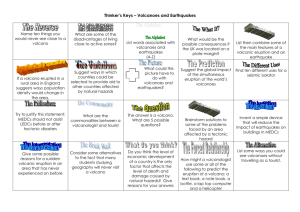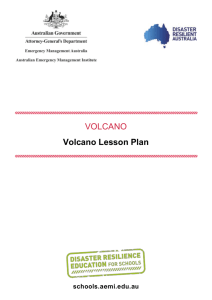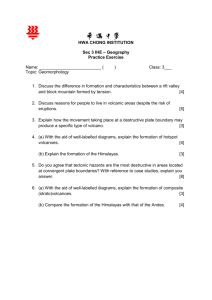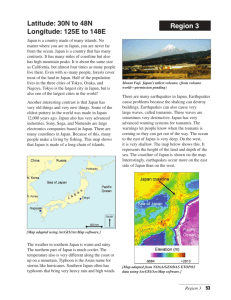activity cards for earthquakes & volcanoes unit
advertisement
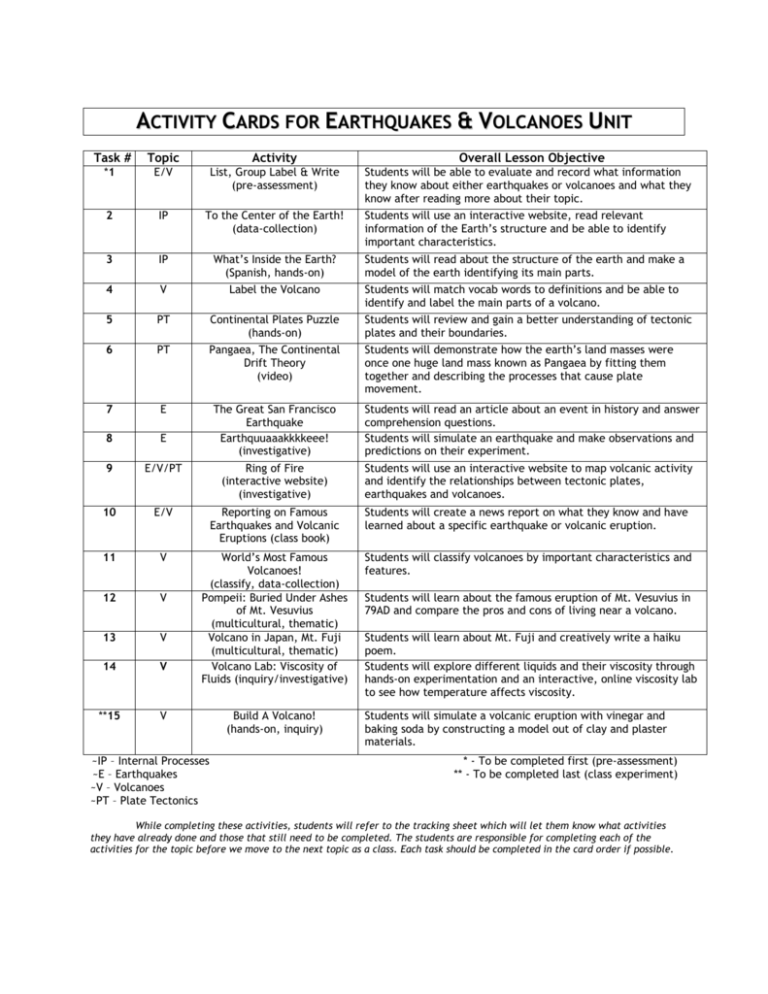
ACTIVITY CARDS FOR EARTHQUAKES & VOLCANOES UNIT Task # Topic Activity *1 E/V List, Group Label & Write (pre-assessment) 2 IP To the Center of the Earth! (data-collection) 3 IP What’s Inside the Earth? (Spanish, hands-on) 4 V Label the Volcano 5 PT Continental Plates Puzzle (hands-on) 6 PT Pangaea, The Continental Drift Theory (video) 7 E 8 E The Great San Francisco Earthquake Earthquuaaakkkkeee! (investigative) 9 E/V/PT Ring of Fire (interactive website) (investigative) Students will use an interactive website to map volcanic activity and identify the relationships between tectonic plates, earthquakes and volcanoes. 10 E/V Reporting on Famous Earthquakes and Volcanic Eruptions (class book) Students will create a news report on what they know and have learned about a specific earthquake or volcanic eruption. 11 V Students will classify volcanoes by important characteristics and features. 12 V 13 V 14 V World’s Most Famous Volcanoes! (classify, data-collection) Pompeii: Buried Under Ashes of Mt. Vesuvius (multicultural, thematic) Volcano in Japan, Mt. Fuji (multicultural, thematic) Volcano Lab: Viscosity of Fluids (inquiry/investigative) **15 V ~IP – Internal Processes ~E – Earthquakes ~V – Volcanoes ~PT – Plate Tectonics Build A Volcano! (hands-on, inquiry) Overall Lesson Objective Students will be able to evaluate and record what information they know about either earthquakes or volcanoes and what they know after reading more about their topic. Students will use an interactive website, read relevant information of the Earth’s structure and be able to identify important characteristics. Students will read about the structure of the earth and make a model of the earth identifying its main parts. Students will match vocab words to definitions and be able to identify and label the main parts of a volcano. Students will review and gain a better understanding of tectonic plates and their boundaries. Students will demonstrate how the earth’s land masses were once one huge land mass known as Pangaea by fitting them together and describing the processes that cause plate movement. Students will read an article about an event in history and answer comprehension questions. Students will simulate an earthquake and make observations and predictions on their experiment. Students will learn about the famous eruption of Mt. Vesuvius in 79AD and compare the pros and cons of living near a volcano. Students will learn about Mt. Fuji and creatively write a haiku poem. Students will explore different liquids and their viscosity through hands-on experimentation and an interactive, online viscosity lab to see how temperature affects viscosity. Students will simulate a volcanic eruption with vinegar and baking soda by constructing a model out of clay and plaster materials. * - To be completed first (pre-assessment) ** - To be completed last (class experiment) While completing these activities, students will refer to the tracking sheet which will let them know what activities they have already done and those that still need to be completed. The students are responsible for completing each of the activities for the topic before we move to the next topic as a class. Each task should be completed in the card order if possible.


